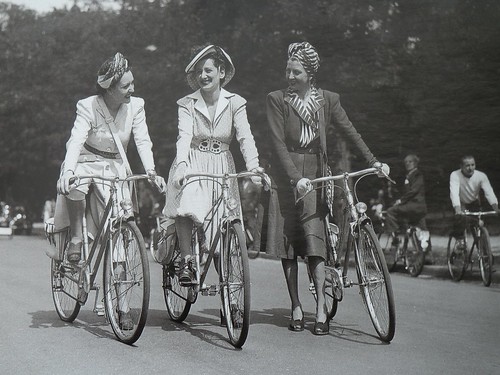A little while ago I came across this beautiful old photo of three Parisian ladies with their bicycles. How happy they look, how carefree - it was a picture that put a nostalgic smile on my face... until I noticed the date, which was 1942. Carefree Parisians giggling on their bikes during nazi occupation? Historically, the photo did not make sense. I was not the only one to notice the discrepancy, and soon comments began appearing below the image, such as "It looks [as if] nothing happened in France during the war?" and "odd, they didn't care the Germans were occupying their city?" The person who posted the photo then explained that it was a publicity shot from a 1942 fashion show, "Journée de `l'élégance à bicyclette." Now it made more sense: The image was intentionally designed to be one of much needed make-believe - suggesting the sort of light-hearted existence that was very far removed from the realities of actual life in Paris at the time. The bicycle here was used as a symbol of escapism.
Looking at contemporary visual narratives involving bicycles, my mind keeps drifting back to this photo and I cannot help but see a connection. While analysts have attempted to explain the current trendiness of cycling with economic and environmental factors, that never rang entirely true to me. There is an undercurrent of hysteria in both the commercial, political and personal focus on the bicycle we see today that goes beyond practical concerns and even aesthetic interests. It is as if the very idea of bicycles - in its deep-rooted association with a simpler, more innocent era and also in its inherent promise of mobility - has the power to reduce anxiety, which could explain its popularity (and marketability?) during times of heightened uncertainty, threat, and social unrest.
 20:39
20:39
 kaniamazdar
kaniamazdar


 Posted in:
Posted in: 













0 comments:
Post a Comment